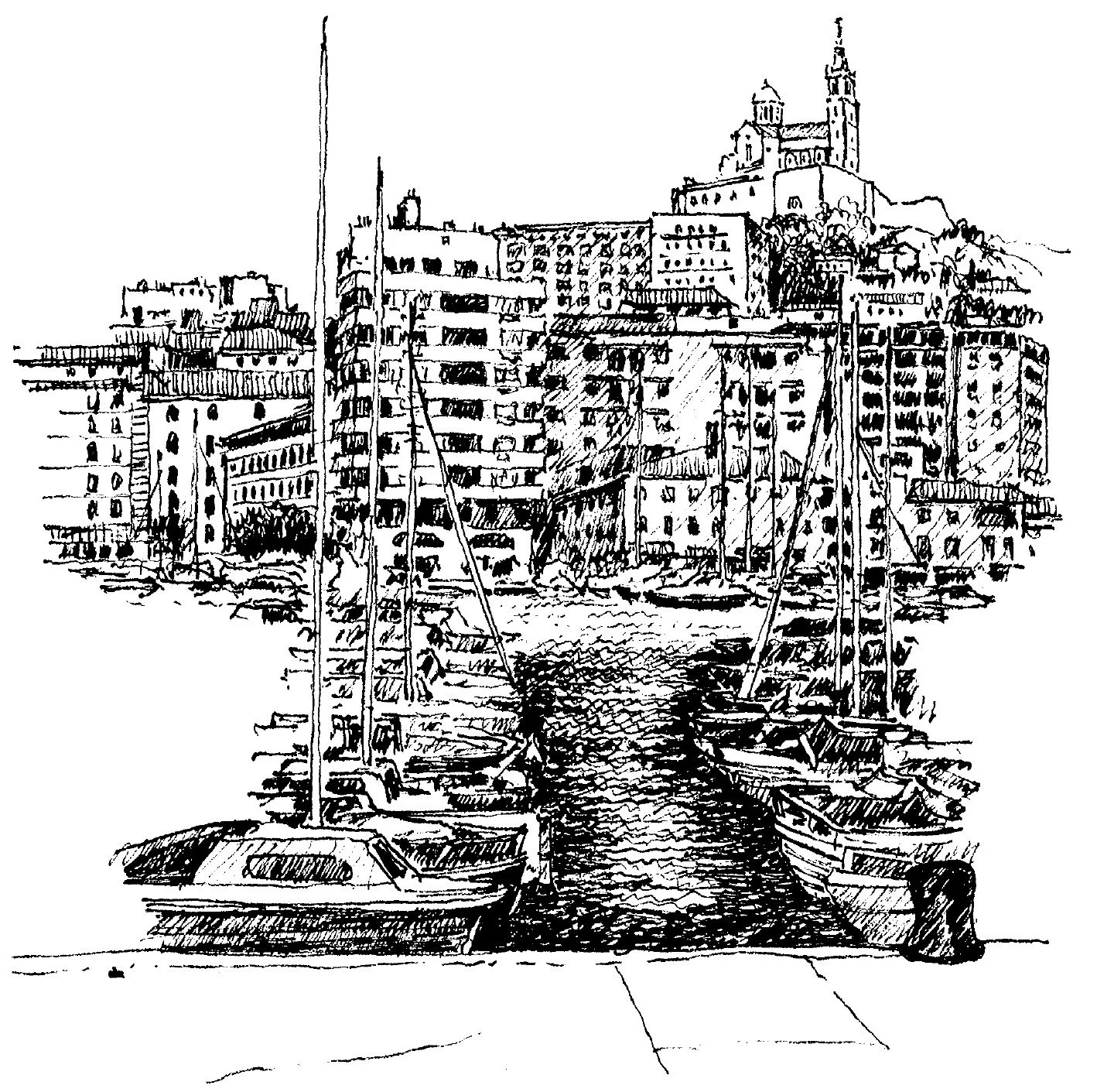THE OLD PORT
Marseille, France
Greek settlers arrived in 600 BC at the rocky Mediterranean cove which is now the Old Port of Marseille. The Old Port remained the center of maritime activity in the area until the 19th century. St. Victor's Abbey (top/center of the sketch) was built between the third and ninth centuries on the hills to the south of the Old Port, on the site of a Hellenic burial ground. Between the 15th and 17th centuries, quays were constructed and a shipyard for galleons put in place. Following a revolt against the governor by the citizens of Marseille, Louis XIV built St. Jean and St. Nicolas Forts at the entrance to the harbor and established an arsenal and fleet in the Old Port. The notorious "arsenal des galères" was situated on the left side of the Old Port. In 1854, the Old Port had a capacity of between 1,000 and 1,200 ships. Roughly 18,000 merchant ships passed through the port each year, carrying about 20 million barrels worth of freight. Due to the shallow depth of the port, deeper docks were built nearby at La Joliette. In World War II, the Old Port was left in complete ruins. In January 1943, the Nazis, aided by the French police, dynamited much of the historic old town and demolished the gigantic aerial ferry, an engineering tour de force that had become a major landmark of Marseille, comparable to the Eiffel Tower in Paris. This became known as the "Battle of Marseille". In 1948, Fernand Pouillon was put in charge of the reconstruction of the devastated old quarter. Today the Old Port is used only as a marina and as a terminal for local boat trips.
The last port-of-call on our 2008 Mediterranean cruise was Marseille, which was really the beginning of a land trip to Aix-en-Provence. Since the Old Port was within walking distance from where our ship docked, I walked to see what was there. The walk around the port was lined with sidewalk restaurants, so I found one with a good view of the port, had lunch, and began the sketch.
